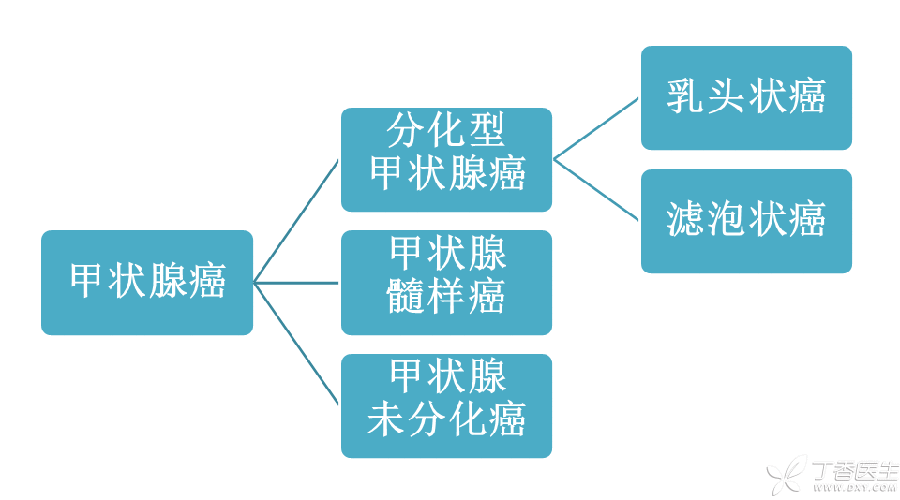
Everyone must have heard of this examination of tumor markers.
Examining tumor markers has many functions:
- Check tumor markers during physical examination, mainly for early detection of tumors. Patients who have been diagnosed with tumors check tumor markers, mainly to evaluate the therapeutic effect and monitor the recurrence of tumors.
Different tumor markers correspond to tumors in different parts. For example:
- AFP: corresponding liver carcinoembryonic antigen CEA: corresponding gastrointestinal tract, lung and other glycosyl antigen CA199: corresponding biliary tract, pancreatic prostate specific antigen PSA: corresponding site is prostate
Tumor Markers of Thyroid Gland
Tumor markers related to thyroid cancer include:
- Thyroglobulin Tg and anti-thyroglobulin antibody TgAb calcitonin Ct
Note: Ct here refers to calcitonin, which is examined by blood drawing. It is not the same concept as CT scan we usually refer to.
Thyroid cancer is divided into many types, as shown in the following figure:

The above mentioned tumor markers correspond to different types of thyroid cancer.
Detection of Tg and TgAb in Differentiated Thyroid Carcinoma
Differentiated thyroid cancer accounts for 90% of all thyroid cancers. Although its mortality rate is not high, there is still a certain risk of recurrence and metastasis within 10 years after surgery.
However, examination of Tg and TgAb can monitor whether the tumor has recurrence or metastasis.
How often should we check?
- The average patient is examined every 6 ~ 12 months. High-risk patients should be more frequent and can be reviewed according to doctor’s advice.
It should be noted that Tg and TgAb should be determined simultaneously, and in order to ensure the comparability of each determination result, they should be examined in the same hospital.
Thyroid medullary carcinoma Ct
Although medullary thyroid cancer accounts for only 0.3% ~ 4% of all thyroid cancers, its mortality rate is much higher than that of differentiated thyroid cancer, which is a rather terrible thyroid cancer.
Because medullary thyroid cancer does not have what’s typical symptoms, most patients are already in the advanced stage of the tumor when they are found. If Ct can be checked as early as possible (such as when thyroid nodules are first found), it will help early diagnosis and save the patient’s life.
Many patients know that they have medullary cancer only after the operation through pathological examination. They may have to undergo the second operation because the scope of the first operation is not enough. If you can check Ct before the operation to determine that it is medullary cancer, you can greatly reduce the probability of reoperation.
In addition, regular examination of Ct after surgery can also evaluate the prognosis of patients. The slower the increase of Ct, the greater the hope of survival of patients. It is recommended to examine Ct every 6 months after surgery.
Summary
Having said so much, everyone may already be a little dizzy. It doesn’t matter, just remember the following points:
-
Tumor markers related to thyroid cancer include: Tg, TgAb and Ct.
-
Tg and TgAb correspond to differentiated thyroid carcinoma (including papillary carcinoma and follicular carcinoma). Examination should be conducted every 6 ~ 12 months after surgery in order to detect tumor recurrence and metastasis as early as possible.
-
Ct corresponds to medullary thyroid carcinoma. Preoperative examination of Ct can diagnose medullary carcinoma in early stage and avoid secondary surgery. Examination of Ct after surgery can assess the patient’s chances of survival. Generally, the examination is conducted every 6 months after surgery.
-
It is better to check in the same hospital every time to ensure the comparability of results.
